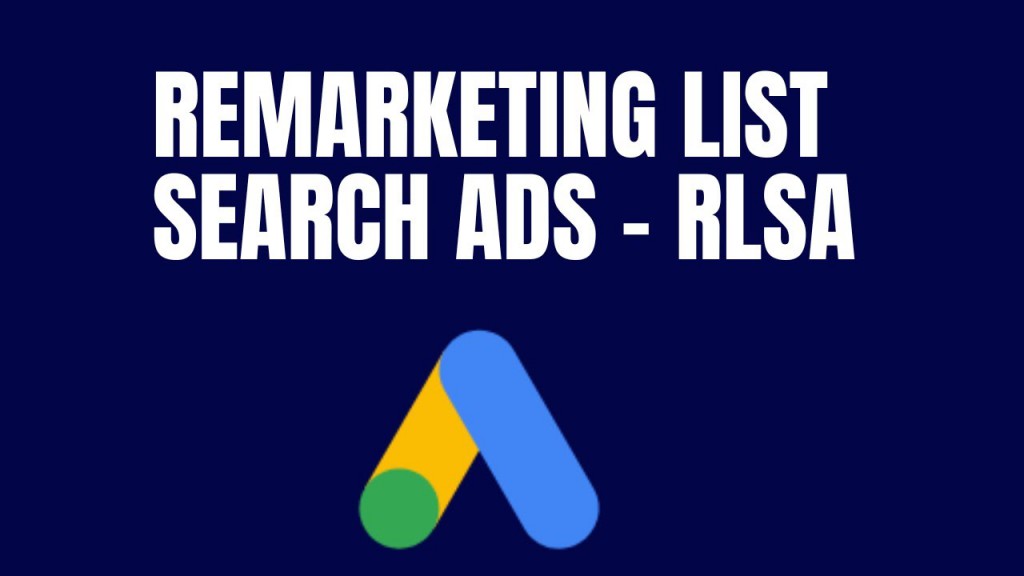In the dynamic world of digital marketing, capturing the attention of potential customers and converting them into loyal clients requires strategic precision. Remarketing Lists for Search Ads (RLSA) stands out as a powerful tool within Google Ads that allows advertisers to reconnect with users who have previously interacted with their website or mobile app. By tailoring search ads based on a user’s past behavior, interests, and actions, RLSA enables advertisers to enhance ad relevance, increase click-through rates (CTR), and ultimately boost conversions. This article explores the capabilities of RLSA and provides actionable strategies to leverage this tool effectively for maximizing campaign performance.
Understanding Remarketing Lists for Search Ads (RLSA)
Remarketing Lists for Search Ads (RLSA) is a feature in Google Ads that allows advertisers to customize their search campaigns for users who have previously visited their website or engaged with their app. Unlike traditional search campaigns that target users based on search queries alone, RLSA enables advertisers to adjust bids, tailor ad copy, and customize landing pages based on a user’s previous interactions with their brand.
How RLSA Works
RLSA leverages data from remarketing lists created in Google Ads, which track user interactions such as:
- Website Visits: Users who have visited specific pages on your website.
- Product Views: Users who have viewed specific products or categories.
- Shopping Cart Abandonment: Users who have added items to their cart but did not complete the purchase.
- Past Conversions: Users who have previously converted on your website.
By segmenting users into these lists, advertisers can create targeted campaigns that re-engage past visitors with relevant ads when they perform subsequent searches on Google.
Benefits of Using RLSA
Implementing RLSA in your Google Ads strategy offers several key advantages:
- Enhanced Ad Relevance: Tailor your ads to match the user’s previous interactions with your website or app, increasing relevance and engagement.
- Increased Conversion Rates: Reach users who are more likely to convert based on their previous engagement with your brand, products, or services.
- Improved Return on Investment (ROI): Maximize the effectiveness of your ad spend by focusing on users who have already shown interest in your offerings.
- Better Campaign Performance: Adjust bids and ad messaging to capture users at different stages of the purchase funnel, from awareness to conversion.

Effective RLSA Campaigns strategies to increase conversions in Google Ads
Strategies for Leveraging RLSA to Boost Conversions
To effectively leverage RLSA and maximize conversions in your Google Ads campaigns, consider implementing the following strategies:
1. Segment Your Remarketing Lists
Create segmented remarketing lists based on user behavior and intent:
- Abandonment Segments: Target users who abandoned their shopping carts or did not complete a transaction.
- High-Value Customers: Prioritize users who have made high-value purchases or frequent transactions.
- Content Interactions: Reach users who have engaged with specific content or visited key pages on your website.
2. Adjust Bid Strategies
Modify your bid adjustments to reflect the value of each remarketing list:
- Bid Higher for High-Intent Users: Increase bids for users who have previously completed conversions or exhibited strong purchase intent.
- Bid Lower for Low-Intent Users: Adjust bids downward for users who have shown minimal engagement or are in the early stages of the buyer’s journey.
3. Customize Ad Copy and Messaging
Tailor your ad copy and messaging to resonate with users based on their previous interactions:
- Personalized Offers: Highlight special promotions, discounts, or personalized recommendations based on past user behavior.
- Dynamic Keyword Insertion: Use dynamic keyword insertion to automatically match ad copy with the user’s search query and remarketing list criteria.
4. Optimize Landing Pages
Direct users to landing pages that align with their search intent and previous interactions:
- Message Consistency: Ensure that the landing page content aligns with the ad copy and offers relevant information or incentives to encourage conversions.
- Streamlined Conversion Process: Simplify the conversion process with clear CTAs and minimal distractions to facilitate seamless user actions.
5. Exclude Converted Users
Exclude users who have already converted from seeing your RLSA ads to focus your budget on acquiring new customers or re-engaging non-converted users.
6. Monitor and Adjust Performance
Regularly monitor the performance of your RLSA campaigns and make data-driven adjustments:
- Performance Metrics: Track metrics such as CTR, conversion rates, cost per acquisition (CPA), and return on ad spend (ROAS) to evaluate campaign effectiveness.
- A/B Testing: Experiment with different bid adjustments, ad creatives, and landing page variations to optimize performance and maximize conversions.
Case Study: Success with RLSA
Let’s illustrate the impact of RLSA with a hypothetical case study:
Company XYZ, an online retailer specializing in electronics, implemented RLSA campaigns targeting users who had previously viewed product pages but did not complete a purchase. By adjusting bids and tailoring ad messaging to highlight limited-time discounts and product availability, Company XYZ saw a 30% increase in conversion rates and a 20% decrease in CPA within the first month of implementing RLSA.
Wrapping it up
Remarketing Lists for Search Ads (RLSA) is a powerful tool for enhancing the effectiveness of your Google Ads campaigns by re-engaging users who have shown interest in your products or services. By segmenting your audience, adjusting bids, and customizing ad copy and landing pages based on user behavior, you can significantly increase ad relevance, engagement, and conversions. Incorporate these strategies into your Google Ads strategy to leverage the full potential of RLSA and achieve measurable success in driving conversions for your business. Start implementing RLSA today and watch as your Google Ads campaigns deliver higher returns and enhanced customer acquisition.






